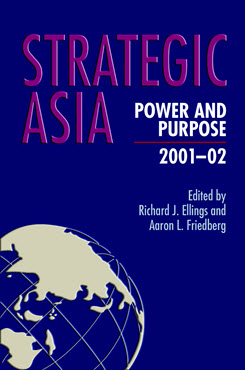Ballistic Missile Development
The growing presence of ballistic missiles in Asia arguably constitutes one of the most significant and complex factors influencing the regional security environment. This study identifies and analyzes the major features of ballistic missile development and attempts to assess its possible implications for regional security and U.S. interests.
The development of ballistic missile capabilities—along with the proliferation of missiles and missile-related technologies—are becoming an increasingly significant security issue for the United States and many Asian countries. Ballistic missiles are of particular concern to the Asian security environment because, when tipped with conventional high explosive warheads, or especially nuclear, chemical, or biological warheads, they present a combination of capabilities and features unmatched by any other weapon. They can travel at supersonic speeds, thus reducing warning time, in some cases down to a few minutes. Moreover, they can cover enormous distances, from less than 100 km to over 10,000 km, thus potentially threatening the rear areas of a military theater or even the homeland of an opponent.
In many cases missiles can strike a target with a high level of accuracy and with enormous force, often producing devastating damage before an opponent can react. Since they are unmanned, their use does not risk the loss of highly skilled military personnel, such as pilots. Furthermore, a missile will not defect or refuse to carry out orders. In addition, ballistic missiles are very difficult to defend against, especially if a potential opponent desires to intercept them before they can strike their intended targets. And unlike airfields or artillery bases, which are large, fixed, vulnerable targets prone to attack by a sophisticated military power, hidden or mobile missiles are hard to find and destroy. Finally, many types of missiles are relatively easy to deploy and operate, especially if compared to a trained air force with manned aircraft and a large infrastructure. As the Rumsfeld Report states, “Whether short or long range, a successfully launched ballistic missile has a high probability of delivering its payload to its target compared to other means of delivery.”
Whether used as operational weapons of war or as strategic weapons of deterrence or coercive diplomacy, the development, deployment, and transfer of ballistic missiles pose several major concerns for both Asian and U.S. leaders. First, ballistic missiles can greatly increase the sense of vulnerability of key regional states—including U.S. friends and allies in the region—and thus generally raise tensions and undermine stability. Second, ballistic missiles could greatly increase the direct threat posed to U.S. forward-deployed forces in Asia. Third, the presence of ballistic missiles in Asia could greatly stimulate the proliferation of whole missiles, missile components, missile-related technologies, and WMD warheads, both within the region and beyond. Fourth, the possession of intermediate or long-range ballistic missiles by Asian states hostile to U.S. interests could greatly increase the ability of such countries to directly threaten U.S. territory.
The dangers and concerns presented by the development, deployment, and transfer of ballistic missiles in Asia have prompted the United States and other Asian countries to consider the development of active measures to defend against such weapons.
As the above suggests, the growing presence of ballistic missiles in Asia arguably constitutes one of the most significant and complex factors influencing the regional security environment. This study identifies and analyzes the major features of ballistic missile development and attempts to assess its possible implications for regional security and U.S. interests.
Strategic Asia
The Strategic Asia annual edited volume incorporates assessments of economic, political, and military trends and focuses on the strategies that drive policy in the region. Learn more about Strategic Asia.


